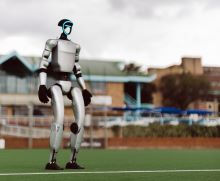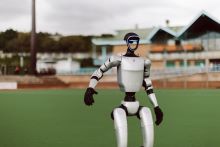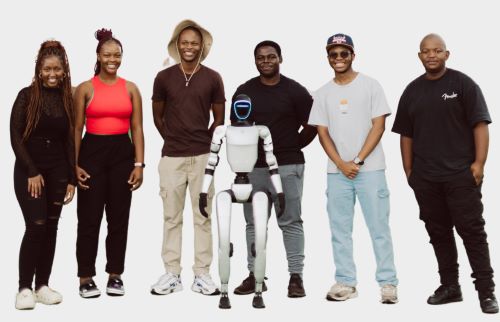by Phumla Mkize
In a first-of-its-kind at a public university in South Africa, the Tshwane University of Technology (TUT) has added a humanoid robot to its mix of AI platforms to enhance artificial intelligence (AI) training, research and learning.
The humanoid adds to the institution’s mix of AI platforms for teaching and learning that comprise the universal robot platform and the quadruped-legged robot dog.
Guided by the philosophy of AI that helps humans perform better, this trio of platforms allows the University to test, research and look at suitable applications.
Acting Director of the TUT AI Hub, Prof Anish Kurien, said the University’s latest acquisition demonstrates how technology is evolving in terms of machines that can mimic human movement and capabilities.
TUT is also home to one of four AI hubs of the AI Institute of South Africa.
Prof Kurien – co-author of “A Study on the AI Landscape of Universities in Africa”, which reviewed the state of AI readiness at universities in Africa – added that as costs of humanoid robots come down, its insertion in everyday life will become more prevalent.
In addition to being a training platform for students to get exposure in new AI technology, said Prof Kurien, the University is studying how biped robots can benefit the manufacturing sectors.
“Our primary interest within the AI Hub is the application of such devices in the manufacturing sector, one of the catalytic projects assigned to TUT by the national Department of Communication and Digital Technologies,” he added.
“We are looking at environment-monitoring applications. For example, in the livestock industry, how do such machines come alongside those industries to assist farmers?
“We have a keen interest in the medical industry and how such devices could provide an assistive role in those environments,” he continued.
He said the humanoid robot platform is like any other sensor-based technology.
“The devices are embedded with visual and proximity sensors, allowing the device to react to externally sensed information,” he said.
Elaborating on the use of the other two robots to enhance teaching and learning, Prof Kurien said the universal robot was a purely research-oriented platform, adding that it is already used widely in industry for human-machine interaction because of its size.
According to him, the second platform, the quadruped-legged robot dog serves as a test platform and could be inserted in hazardous environments.
“The potential applications included environments that pose a risk to a human, for example, in mining. If you have environments or areas within the mine where it is risky to send a human to inspect, such a platform [as quadruped-legged robot dog] is suitable because it is less susceptible to hazards faced in such environments,” he said.



TUT’s latest training platform, the humanoid robot, will give students exposure to new AI technology. The platform will also be used to study how biped robots can benefit the manufacturing sectors.
